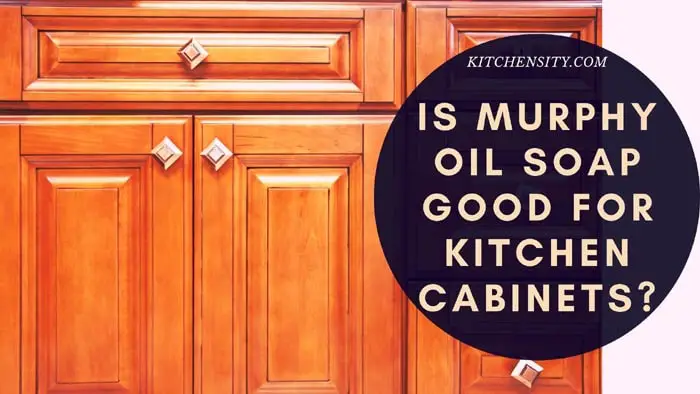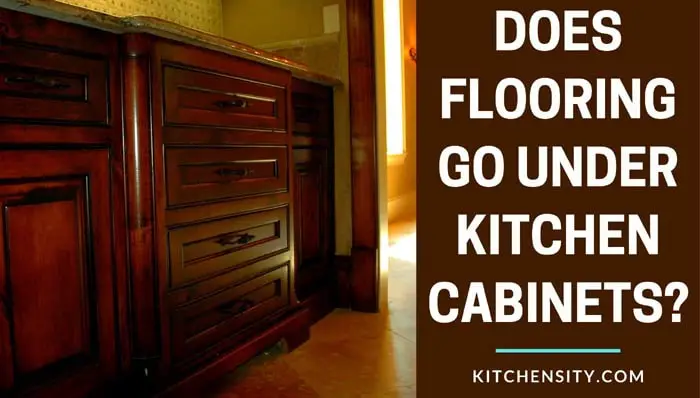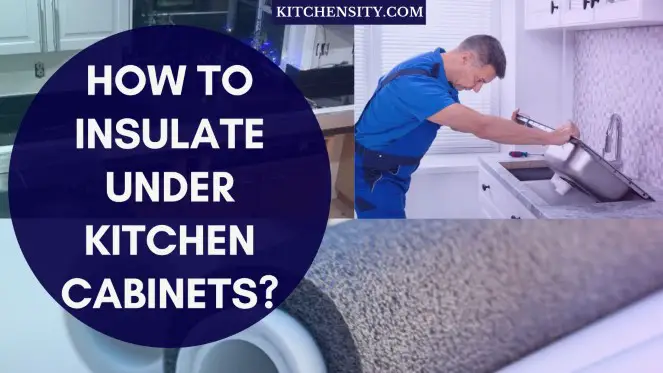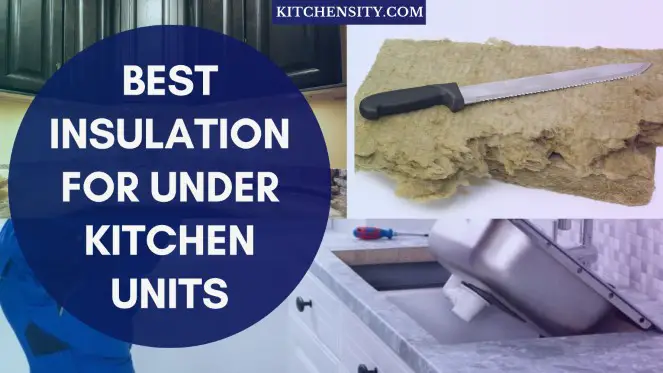When it comes to keeping our kitchen cabinets clean and shiny, we want to find the best cleaning product.
With so many options available, it can be hard to know which one to choose. However, there is one product that has been trusted for years: Murphy Oil Soap.
It’s known for using natural ingredients and being safe for cleaning wooden surfaces, including kitchen cabinets.
But is Murphy Oil Soap really good for kitchen cabinets? In this article, we’ll explore its benefits and see if it can effectively remove grease and dirt, restore shine, and protect our cabinets.
Let’s find out if Murphy Oil Soap is the right choice for keeping our kitchen cabinets clean and looking great.

Table of Contents
- 1 Is Murphy Oil Soap Good For Kitchen Cabinets?
- 2 Cleaning The Cabinets (Items Required And Process)
- 3 How To Clean Wooden Cabinets With Murphy’s Oil Soap?
- 4 How To Use Murphy Oil Soap On Cabinets?
- 5 Murphy’s Oil Soap Ingredients
- 6 How To Dilute Murphy Oil Soap For Cabinets?
- 7 How To Use Murphy Concentrated Wood Cleaner On Cabinets?
- 8 Can We Use Murphy’s Oil Soap On Painted Cabinets?
- 9 Safety Measures And Precautions
- 10 Final Verdict On Murphy Oil Soap
- 11 You May Also Like
- 12 FAQ’s
Is Murphy Oil Soap Good For Kitchen Cabinets?
Yes, Murphy Oil Soap is excellent for kitchen cabinets. It effectively removes sticky and greasy residue, leaving the cabinets clean and shiny. Its natural ingredients ensure that it won’t cause discoloration or damage to the cabinets, making it a safe and reliable choice for maintaining the beauty of your kitchen cabinets.
Here are some reasons why Murphy Oil Soap is beneficial for kitchen cabinets:
- Gentle Yet Effective Cleaning: Murphy Oil Soap is specially formulated with natural ingredients that are gentle on wood surfaces. It effectively removes dirt, grime, grease, and sticky residue without causing discoloration or damage to the cabinets.
- Safe For Wood: Murphy Oil Soap is designed specifically for use on wood, making it suitable for cleaning and maintaining the natural beauty of wooden cabinets. It does not contain harsh chemicals or abrasive ingredients that could harm the wood finish.
- Restores Shine: Over time, kitchen cabinets can become dull and lose their shine due to accumulated dirt and grease. Murphy Oil Soap not only cleans the cabinets but also restores their natural luster and shine, giving them a refreshed appearance.
- Protects Against Drying: Wooden cabinets can dry out and become susceptible to cracking or warping if not properly maintained. Murphy Oil Soap contains moisturizing properties that help nourish and hydrate the wood, preventing it from drying out and maintaining its integrity.
- Versatile Application: Murphy Oil Soap can be used on a variety of wood surfaces in the kitchen, including cabinets, countertops, tables, and chairs. It is also suitable for cleaning other wooden items such as furniture and floors, providing a versatile cleaning solution.
- Trusted Brand: Murphy Oil Soap has a long history and a reputation for delivering reliable and effective cleaning results. It has been trusted by homeowners and professionals alike for generations as a go-to product for cleaning and caring for wood surfaces.
When used according to the instructions, Murphy Oil Soap can help keep kitchen cabinets clean, nourished, and protected.
It is a reliable choice for maintaining the beauty and longevity of wooden cabinets, making it a good option for cleaning kitchen cabinets.
Also Read – How To Draft-Proof Your Under Kitchen Cabinets?
Cleaning The Cabinets (Items Required And Process)
There are two products available for cleaning, one is a Murphy oil soap regular and the other is a Murphy oil soap wood cleaner sprayer.
You can use your desired product, but here in this article, I will discuss the regular one as it is available in most homes.
You can repeat the process with the sprayer one but skip only the dilution part. The sprayer one is a ready-to-use product and doesn’t require dilution and rinsing. You spray it on, and you do the cleaning.
Also Read – How To Stop A Draught From Behind Kitchen Cupboards?
Materials Required
- Murphy Oil Soap
- Soft Sponge
- Bowl or Bucket
- Deep Cleaning Brushes (If not available then use a toothbrush)
- Cotton Terry Cloth
These are some items that will be required for cleaning the wooden kitchen cabinets. Now, let’s go and start cleaning.
How To Clean Wooden Cabinets With Murphy’s Oil Soap?
Murphy Oil Soap regular one is a concentrated liquid, so you have to make dilute it with water. I am making a solution with water to clean more than 60 panels. So, if you have fewer panels then lowered the quantity.
Step 1: First, take 1/4th cup of the oil soap and mix it with a gallon of warm water. Properly mix it in a bowl. Check it first on a corner for any discoloration, if it turns dark color then you can’t use it.
Step 2: Next, remove all the knobs, handles, and dust off the cabinets with a duster before cleaning with the solution. Put the knobs and handles in a small container with 2-3 drops of dishwashing soap and let them soak for some time.
Step 3: Now, take the soft sponge and dip in the solution and properly squeeze it to use a minimum amount of water to clean the cabinets.
Step 4: Now, try to clean the cabinets along with the grain of the wood. This will help you to clean them perfectly. Don’t scrub too hard or apply pressure, just do it gently. Our main goal is to clean as much as dirt we possibly can.
Step 5: Once you have cleaned the cabinet, now it’s time to clean the nooks and crannies. So, take the deep cleaning brushes and try to clean all the stuff that doesn’t come off in the first place.
Step 6: Clean all the edges, the rims, and all the indentations where you can see the junk has stuck with the help of these brushes.
Step 7: Now, open the doors and clean around the edges where the door seal. You will see the dirt drip down there. So, clean them properly with the help of a sponge and brushes.
Step 8: After cleaning the cabinets completely, now it’s time to put back the knobs and handles. So, take out the knobs, handles from the solution and rub them with a towel, and put them back on the cabinets.
Step 9: Finally, take a dry towel or terry cloth and wipe all the panels, edges, and areas properly to get a polished look. Because, Murphy oil soap has oil in it, so as it cleans it’s also polishing.
Now, you have a nice and clean kitchen cabinet just like before.
Note: If you have the Murphy oil sprayer, then you will need to spray on the cabinets directly and gently rub it with a sponge. This will give almost the same results as the above case.
Also Read – Why Are My Kitchen Cupboards So Cold?
How To Use Murphy Oil Soap On Cabinets?
Using Murphy Oil Soap on cabinets is a straightforward process. Follow these steps to effectively clean your kitchen cabinets:
- Gather The Necessary Supplies: Before you begin, gather the supplies you’ll need, including Murphy Oil Soap, a soft sponge or cloth, a bowl or bucket, and a dry towel or terry cloth.
- Dilute The Murphy Oil Soap: Murphy Oil Soap is a concentrated liquid, so you’ll need to dilute it before use. In a bowl or bucket, mix 1/4 cup of Murphy Oil Soap with a gallon of warm water. Stir the mixture well to ensure proper dilution.
- Prepare The Cabinets: Remove any knobs or handles from the cabinets. Dust off the cabinets with a duster or dry cloth to remove loose particles. If the knobs or handles are dirty, you can soak them in a small container with a few drops of dishwashing soap while you clean the cabinets.
- Apply The Solution: Dip a soft sponge or cloth into the diluted Murphy Oil Soap solution. Squeeze out excess liquid to avoid oversaturating the cabinets. The sponge or cloth should be damp, not dripping wet.
- Clean The Cabinets: Gently wipe the cabinets with a damp sponge or cloth, working in the direction of the wood grain. Use light pressure and avoid scrubbing too hard to prevent damage. Pay attention to areas with sticky or greasy residue, ensuring a thorough cleaning.
- Clean Nooks And Crannies: For hard-to-reach areas or intricate details, use a small brush, such as a toothbrush or deep cleaning brush, to clean the nooks and crannies of the cabinets. This will help remove any trapped dirt or grime.
- Clean Around Edges And Door Seals: Open the cabinet doors and clean around the edges where the door seals. These areas often collect dirt and residue. Use a damp sponge or cloth to clean these areas thoroughly.
- Clean Knobs And Handles: Once the cabinets are cleaned, remove the knobs or handles from the soaking solution. Use a towel to dry them off and remove any remaining residue. Put them back in the cabinets.
- Wipe Dry: Finally, take a dry towel or terry cloth and wipe all the cabinet surfaces to remove any excess moisture. This will help give the cabinets a polished look and prevent water spots.
Following these steps will ensure that you effectively use Murphy Oil Soap to clean your kitchen cabinets, leaving them clean, nourished, and restored.
Also Read – Best Insulation for Under Kitchen Units
Murphy’s Oil Soap Ingredients
Murphy’s Oil Soap is known for its use of natural ingredients. The specific ingredients may vary slightly depending on the product variant and formulation.
However, the primary ingredients in Murphy’s Oil Soap typically include:
- Water: Water is the base ingredient in Murphy’s Oil Soap, providing a liquid medium for the other ingredients.
- Sodium Tallate: Sodium Tallate is a natural soap derived from tall oil, which is obtained from pine trees. It acts as a surfactant, helping to dissolve dirt, grease, and grime.
- Fragrance: Murphy’s Oil Soap often contains a fragrance to impart a pleasant scent to the product and leave a fresh aroma after cleaning.
- Trisodium MGDA: Trisodium MGDA, also known as methylglycinediacetic acid trisodium salt, is a chelating agent. It helps to bind and remove mineral deposits and can enhance the cleaning effectiveness of the soap.
- Lauramidopropyldimethylamine: Lauramidopropyldimethylamine is a conditioning agent that helps to moisturize and protect wood surfaces, preventing them from drying out.
It’s important to note that while Murphy’s Oil Soap primarily uses natural ingredients, it’s always recommended to check the specific product label for a complete and accurate list of ingredients.
Also Read – How to Insulate Under Kitchen Cabinets?
How To Dilute Murphy Oil Soap For Cabinets?
To dilute Murphy Oil Soap for cleaning cabinets, you can follow these general guidelines:
- Gather The Supplies: You’ll need Murphy Oil Soap, a container (such as a bowl or bucket), warm water, and a measuring cup or spoon.
- Determine The Dilution Ratio: The recommended dilution ratio for Murphy Oil Soap is typically 1/4 cup of soap per gallon of warm water. However, you can adjust the ratio based on your specific cleaning needs and the size of the cabinet surface you’re cleaning. For smaller cleaning jobs, you can reduce the quantities accordingly.
- Measure The Soap: Use a measuring cup or spoon to pour 1/4 cup of Murphy Oil Soap into the container. Make sure to use an appropriate measuring tool to achieve the correct amount.
- Add Warm Water: Fill the container with warm water. For the recommended ratio, you would add one gallon of warm water. Adjust the amount of water accordingly if you’re using a smaller container or want a different dilution strength.
- Mix Thoroughly: Stir the mixture in the container using a spoon or whisk until the soap is fully dissolved and well blended with the water. Make sure the soap is evenly distributed in the solution.
- Test For Discoloration (Optional): Before using the diluted solution on your cabinets, it’s advisable to test a small, inconspicuous area first. Apply a small amount of the diluted solution to a corner or hidden section of the cabinet and check for any adverse reactions or discoloration. If there are no negative effects, proceed with cleaning the entire cabinet surface.
Note: If you’re using Murphy Oil Soap Wood Cleaner Sprayer, there’s no need for dilution. The sprayer product is ready to use directly on the cabinets without any additional mixing.
By following these steps, you can effectively dilute Murphy Oil Soap for cleaning your cabinets.
Adjust the quantities and dilution ratio as needed based on the size of your cleaning task and desired cleaning strength.
Also Read – Effective Ways To Update Old Kitchen Cabinets [Under $100]
How To Use Murphy Concentrated Wood Cleaner On Cabinets?
To use Murphy’s Concentrated Wood Cleaner on cabinets, follow these steps:
- Gather The Necessary Supplies: You’ll need Murphy’s Concentrated Wood Cleaner, warm water, a bucket or container, a soft sponge or cloth, and a dry towel or terry cloth.
- Dilute The Concentrated Wood Cleaner:
- Follow the instructions on the product label to determine the appropriate dilution ratio.
- The recommended ratio is typically 1/4 cup of Concentrated Wood Cleaner per gallon of warm water.
- Adjust the quantities based on your specific cleaning needs and the size of your cabinets.
- Prepare The Cleaning Solution: In a bucket or container, mix the recommended amount of Concentrated Wood Cleaner with the appropriate amount of warm water. Stir the mixture thoroughly to ensure proper dilution.
- Test A Small Area:
- Before applying the diluted cleaner to the entire cabinet surface, it’s advisable to test a small, inconspicuous area.
- Apply a small amount of the solution to a corner or hidden section of the cabinet and check for any adverse reactions or discoloration.
- If there are no negative effects, you can proceed with cleaning the entire cabinet surface.
- Apply The Solution: Dip a soft sponge or cloth into the diluted solution, ensuring it is damp but not overly saturated. Gently wipe the cabinets with the sponge or cloth, working in the direction of the wood grain. Apply light pressure and avoid scrubbing too hard to prevent damage.
- Pay Attention To Stubborn Stains Or Grease: For stubborn stains or greasy residue, you can apply a bit more pressure or use a soft brush to scrub gently. Be cautious not to scratch the cabinet surface.
- Clean Nooks And Crannies: Use a small brush, such as a toothbrush or soft-bristle brush, to clean hard-to-reach areas or intricate details of the cabinets. This will help remove any trapped dirt or grime.
- Wipe Dry: After cleaning the cabinets, use a dry towel or terry cloth to wipe away any excess moisture. This will help prevent water spots and leave the cabinets with a polished finish.
By following these steps, you can effectively use Murphy’s Concentrated Wood Cleaner to clean and refresh your cabinets.
Always refer to the instructions on the product label for specific guidelines and safety precautions.
Also Read – Can You Put Kitchen Cabinets On Top Of Vinyl Plank Flooring?
Can We Use Murphy’s Oil Soap On Painted Cabinets?
While Murphy’s Oil Soap is primarily designed for cleaning and nourishing wood surfaces, it is generally not recommended for use on painted cabinets. The reason is that Murphy’s Oil Soap is an oil-based cleaner, and it may leave behind a residue or cause the paint to become dull or discolored.
- Painted cabinets typically have a protective finish, and using an oil-based cleaner like Murphy’s Oil Soap can break down that finish over time, compromising the durability and appearance of the paint.
- It is best to consult the manufacturer’s instructions or recommendations for cleaning painted cabinets.
- They may provide specific guidelines or suggest alternative cleaning products that are safe and suitable for painted surfaces.
If you are unsure about using Murphy’s Oil Soap on your painted cabinets, it is always a good idea to test a small, inconspicuous area first to see how the cleaner interacts with the paint.
This will help you determine whether it is safe to use on your specific cabinets without causing any adverse effects.
Also Read – How To Cut Down Kitchen Cabinets?
Safety Measures And Precautions
When using Murphy Oil Soap for cleaning kitchen cabinets, it is important to follow certain safety measures and precautions to ensure the well-being of yourself and others.
Here’s an elaboration on the safety measures to consider:
- Wearing Protective Gloves: It is advisable to wear protective gloves, such as rubber or latex gloves while using Murphy Oil Soap. This helps protect your hands from potential skin irritation or dryness that may occur when using cleaning products.
- Avoiding Contact With Eyes: Murphy Oil Soap should never come into direct contact with the eyes. If accidental contact occurs, immediately flush the eyes with clean water for several minutes. If irritation persists, seek medical attention promptly.
- Keeping Out Of Reach Of Children: As with any cleaning product, it is essential to keep Murphy Oil Soap out of the reach of children. Store the product in a secure location, preferably in a locked cabinet or high shelf, to prevent accidental ingestion or misuse by children.
- Accidental Ingestion: In case of accidental ingestion of Murphy Oil Soap, do not induce vomiting unless instructed to do so by medical professionals. Instead, drink a glass of water to dilute the soap and seek immediate medical attention for further advice.
- Proper Ventilation: Ensure that the area where you are using Murphy Oil Soap is well-ventilated. Open windows or turn on exhaust fans to allow fresh air to circulate and prevent the build-up of fumes.
- Follow Label Instructions: Read and follow the instructions provided on the Murphy Oil Soap packaging carefully. Adhere to the recommended dilution ratios, application methods, and safety guidelines specified by the manufacturer.
- Patch Test: Before applying Murphy Oil Soap to the entire surface of your kitchen cabinets, it is recommended to perform a patch test in a discreet area. Apply a small amount of the diluted solution and check for any adverse reactions, discoloration, or damage. If any issues arise, discontinue use immediately.
- Disposal: Follow proper disposal guidelines for the product. Check local regulations for appropriate disposal methods, as some areas may have specific guidelines for disposing of cleaning agents.
By taking these safety measures and precautions, you can ensure a safer and more controlled cleaning experience when using Murphy Oil Soap. It is crucial to prioritize your well-being and the safety of others while handling cleaning products.
Also Read – How To Repair Chipped Paint On Kitchen Cabinets?
Final Verdict On Murphy Oil Soap
In conclusion, Murphy Oil Soap has proven to be a reliable and effective solution for cleaning kitchen cabinets.
Its use of natural ingredients ensures that it cleans without causing any harm or discoloration to the wood.
With its ability to remove sticky and greasy residue, restore shine, and protect the wood from drying out, Murphy Oil Soap stands out as a trustworthy option for maintaining the beauty and cleanliness of your kitchen cabinets.
Whether you’re tackling fingerprints, grime, or simply giving your cabinets a refreshing clean, Murphy Oil Soap is a go-to choice that won’t disappoint.
Say goodbye to dull cabinets and embrace the natural radiance that Murphy Oil Soap brings to your kitchen space.
You May Also Like
- Can You Use Loft Insulation Under Kitchen Cabinets?
- What Can I Put Under My Kitchen Sink to Protect My Cabinets?
- Do Kitchen Cabinets Need Crown Molding?
- Refacing Kitchen Cabinets: An Ultimate DIY Guide
- Replace Kitchen Cabinets Without Replacing Countertop
- Chalk Paint Vs Latex Vs Regular Paint For Kitchen Cabinets
- How To Update Old Kitchen Cabinets?
- Does Flooring Go Under Kitchen Cabinets?
FAQ’s
-
Does Murphy’s Oil Soap Remove Grease?
Yes, Murphy Oil soap is great for removing any grease from the cabinets. It will remove all the impurities, and dirt, and you will get clean and glazed cabinets.
-
Does Murphy Oil Soap Have Wax In It?
No, it doesn’t have any wax. Murphy oil soal is made of 98% natural ingredients and according to them, they use Water, Sodium Tallate, Fragrance, TrisodiumMGDA, and Lauramidopropyldimethylamine.
-
Does Murphy’s Oil Soap Leave A Residue?
If you dilute the liquid properly then it will not leave any residue. I have already discussed the dilution process, so do it like that, and you will not be left with residue. But, if you see any residue left after using Murphy Oil soap, it’s likely that another cleaner was previously used.
-
Does Murphy’s Oil Soap Need To Be Rinsed?
Murphy Oil soap doesn’t require to be rinsed. After cleaning the cabinets with a soft sponge, you just need to wipe them with a dry terry cloth or towel.
-
Can You Mix Vinegar And Murphy’s Oil Soap?
Yes, you can mix it with vinegar but you have to maintain a proportion. If you take a bucket of water then add ½ cup of vinegar in it and a few drops of Murphy oil soap mixed with warm water. This solution is best used for cleaning the floors and for cabinets whatever I have mentioned follow that only and you will get a better result.
Katrina Smith is a seasoned expert with over 25 years of experience in all things related to cooking and the kitchen. As an avid cook and kitchen enthusiast, she is passionate about sharing her knowledge and expertise on cookware, kitchen appliances, kitchen tips, and kitchen staples.
Through her articles and reviews, Katrina aims to inspire and help others improve their cooking skills, experiment with different ingredients, and invest in quality cookware and appliances.

![3 Effective Ways To Update Old Kitchen Cabinets [Under $100] 3 How To Update Old Kitche Cabinets](https://www.kitchensity.com/wp-content/uploads/2021/05/How-To-Update-Old-Kitche-Cabinets.jpg)
![Refacing Kitchen Cabinets: An Ultimate DIY Guide [2023] 4 Refacing Kitchen Cabinets](https://www.kitchensity.com/wp-content/uploads/2021/05/Refacing-Kitchen-Cabinets.jpg)




Is Murphy’s Oil Soap safe to use on painted kitchen cabinets?
Using Murphy’s Oil Soap on painted kitchen cabinets is generally not recommended. Since Murphy’s Oil Soap is an oil-based cleaner, it may leave behind a residue or cause the paint to become dull or discolored.